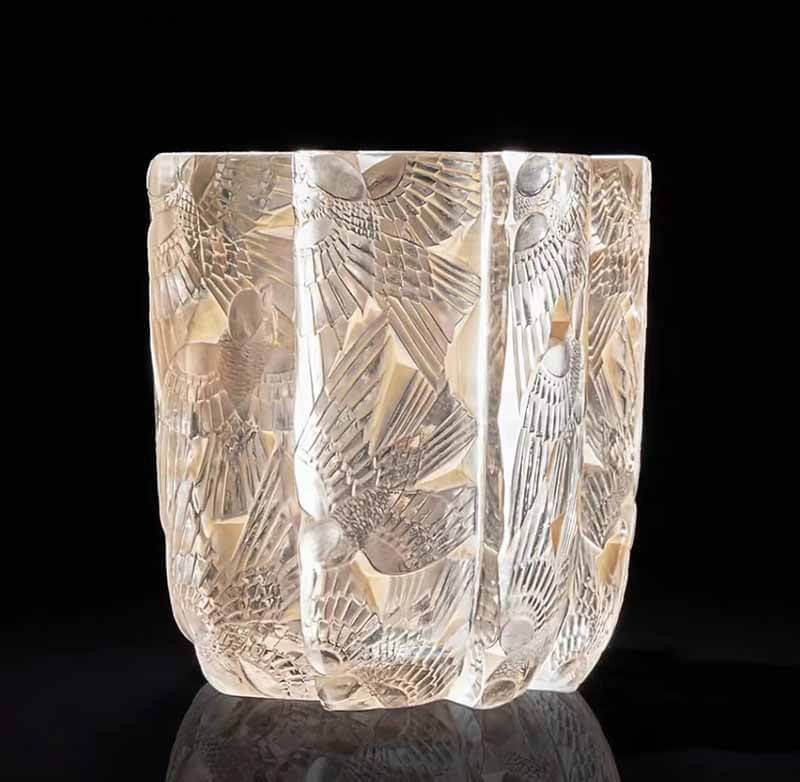


It sold for about $1.1 million, which was roughly eight times the top estimate.
Why can a piece of jewelry with such a low material value command such a high price?
Lalique doesn’t stick to the rules, but to the natural world of flowers, birds, insects, and plants as the topic, the use of delicate lines and specific materials, combined with high craftsmanship, extremely harmonious and elegant hues, and a style that is fresh and original.
He can be said to have revolutionized jewelry design with an unprecedented extreme aesthetic.


Master of Art Nouveau:
Lalique, who was born in a Paris neighborhood, loved painting from an early age, and he was very attentive and had a deep interest in nature.
At the age of 16, he began his jewelry apprenticeship and worked as a designer for Vever, Cartier, and Boucheron.


This cedar pendant, set in white enamel, seems to look out of a window through carved glass.
It is reported to have been inspired by a snowy scene in his homeland, and it was the first time he used glass in jewelry.




Subsequently, in unexpected ways, began to utilize the substance of glass to jewelry manufacture.
He expertly employed the shine and transparency of glass to create dreamy jewelry that was full of deep beauty and unique aesthetic charm.
He met his future wife Alice, the daughter of an artist, in 1890. Sculpture was a big influence on Lalique during their partnership, thus each piece has a lot of sculptural dimension and tension.
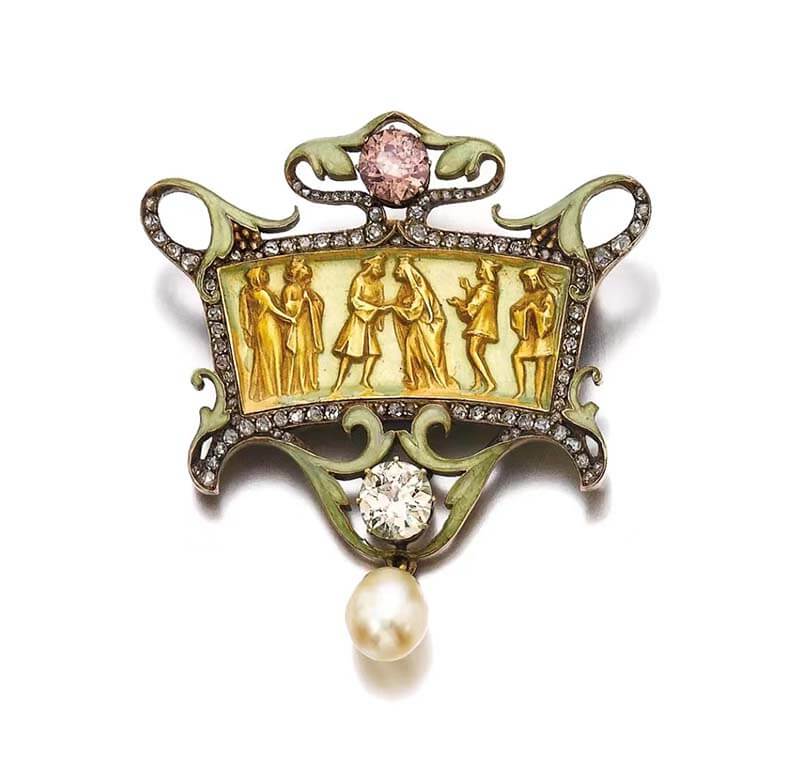


The feminine figure of the butterfly was widely used in Art Nouveau.

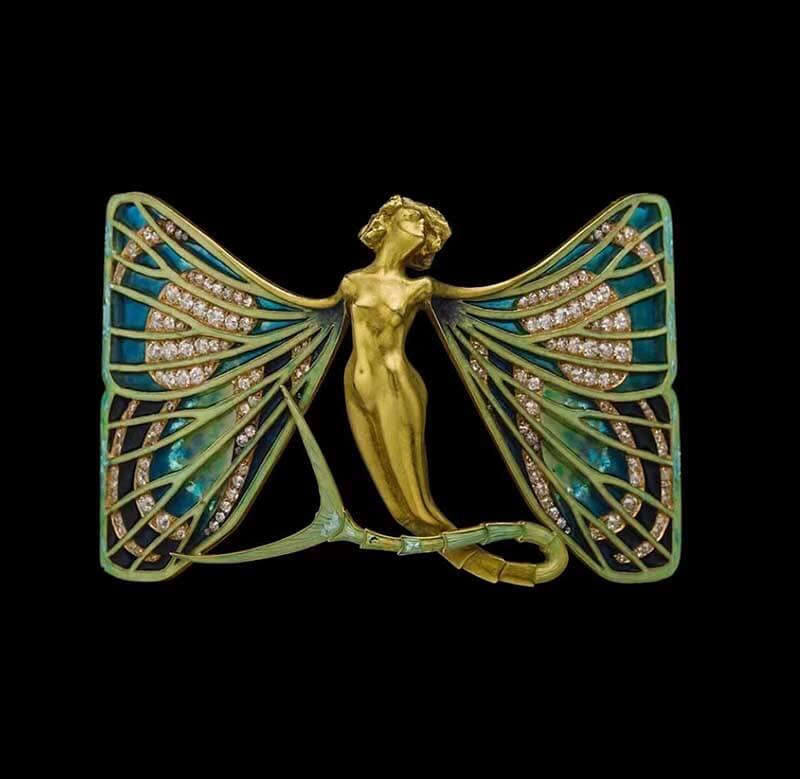

Lalique’s figures are depicted with accuracy and clarity, influenced by French classical art. The color palette is more modest and elegant, and the methodical approach is more restrained and simple.



He frequently seeks flawless symmetry, which, when combined with exquisite control of color, proportion, and form, is always a sight to behold.
His daring attempts to merge the feminine figure into jewelry decorating are more than just reproductions of the female form, but skilfully combine the delicate female figure with animals and flora in a funny and innovative way.

Lalique’s enameling skills are at their peak, with translucent window enameling enhancing the delicate green foliage of the ivy.
Like the artists of the Art Nouveau period, Lalique was inspired by nature, and everything in the natural world was a source of inspiration for him.

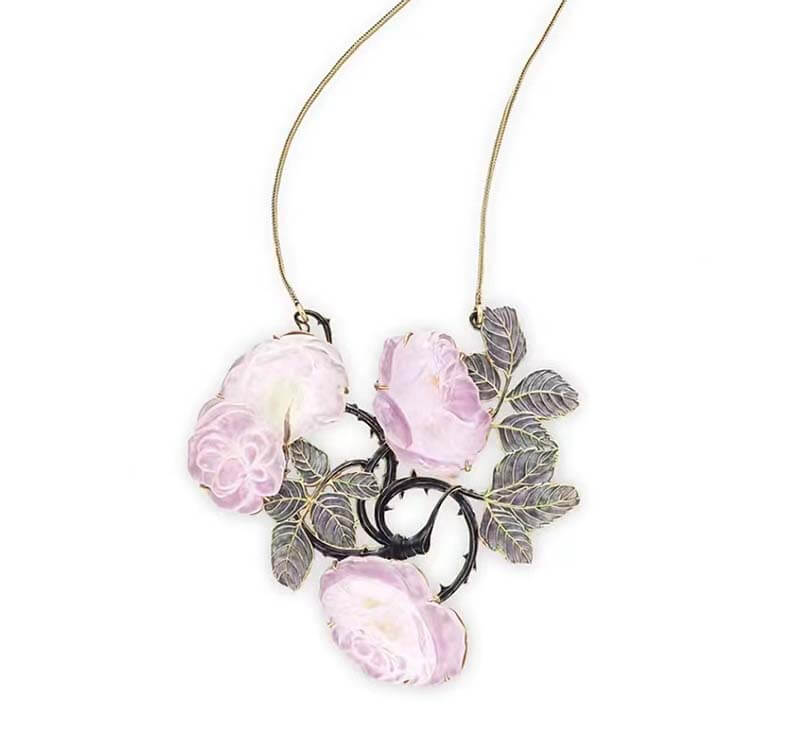


Blooming flowers, dancing dragonflies, and swaying vines come to life through his exquisite craftsmanship.

The peacock is one of his favorite animals, whose brilliant feathers and elegant posture he often praises.

Furthermore, dragonflies and butterflies are frequently masterfully included into his work, each time demonstrating their life and beauty in a new way.


This Cadrian orchid hairpin made of ivory, animal horns, enamel and diamonds fetched €730,000 in December 2021 at Sotheby’s.



While traditional haircards have metal feet, Lalique employed the wings of two swallows as feet, creating an attractive design with a utilitarian function.
The diamonds on the straws in the swallows’ mouths add to Lalique’s inventiveness in framing this dynamic scene.
Enamel, hardstone, semi-precious stones, ivory, and glass are no longer just materials in his hands, but a palette in his hands, creating richer and more diverse works of art, even beyond painting and sculpture.

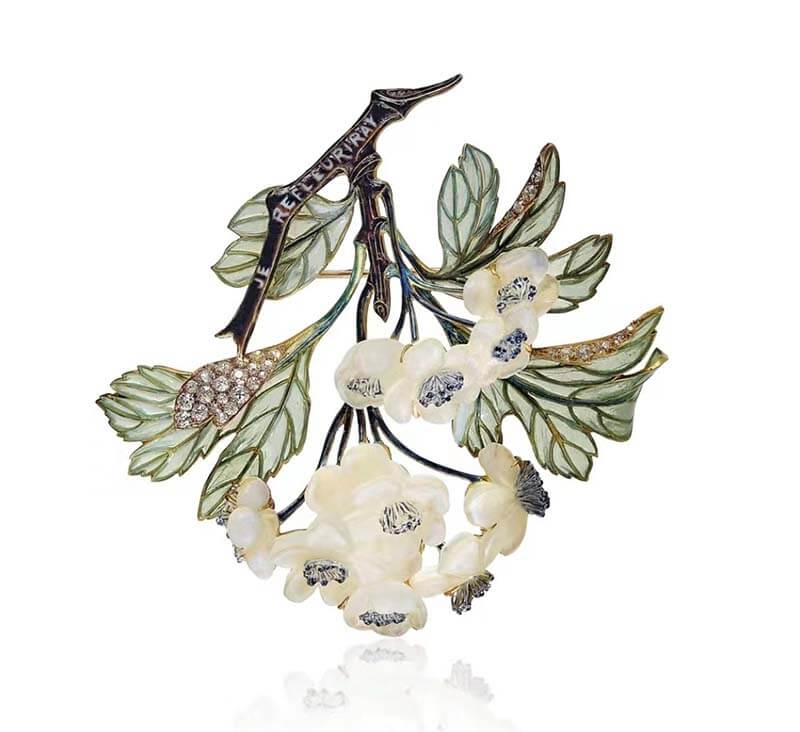
The front of the pendant depicts a lovely female face with a tranquil brow, surrounded by fresh and light wisteria blooms painted in blue and green enamel.
In his hands, the raspberry, sculptural seriousness, realistic barbs, and varied colours of enamel are always in harmony.
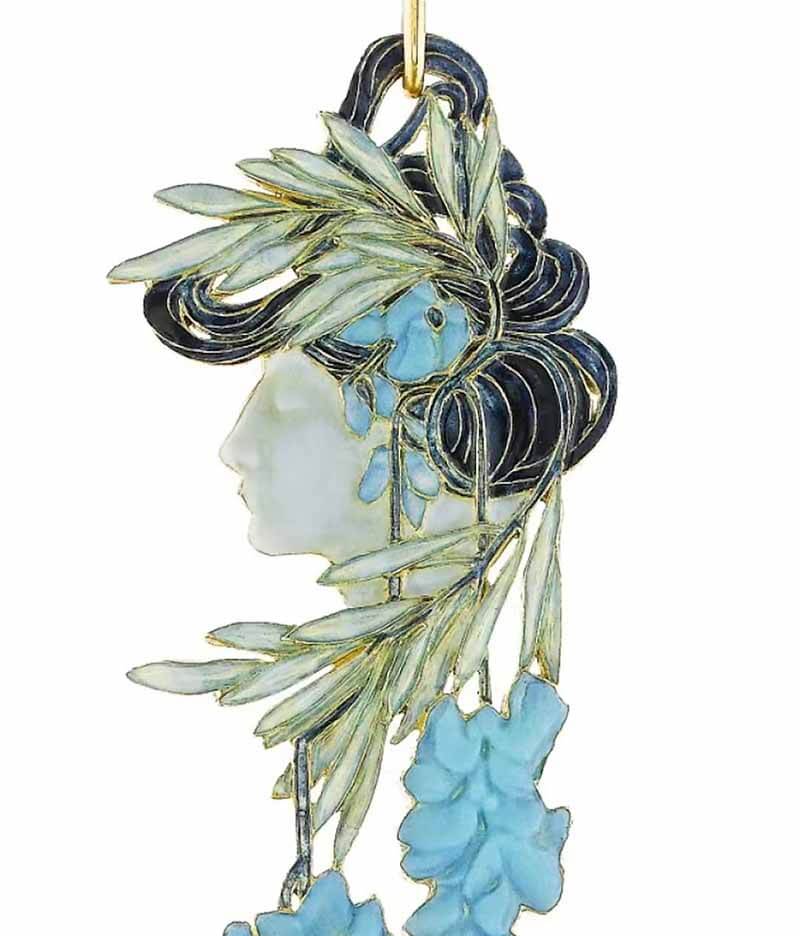

He blends materials of various colors and shapes as if they were the work of nature, much like a magician.
Lalique’s diamonds are more than just ornaments; they have a significance, albeit one that is difficult to articulate.



Swallows are frequently shown in Japanese ukiyo-e art, and Lalique, a fan of Japanese art, has created several pieces featuring swallows.
His ability to pursue his own unique art while embracing new age styles established him as an important and well-deserved leader of the Art Nouveau period.



New Auction Records Explained:
Returning to the opening question, the Art Nouveau movement lasted only a short 15 years or so, from 1898 to the start of World War I.

The essence of French Art Nouveau is best exemplified by Lalique’s work.
The utmost in great craftsmanship, the laborious crafting yet amazing ingenuity.
According to Michel Perinet, a prominent Parisian Art Nouveau expert, Lalique afterwards created a number of remarkable works, but they were not as inventive as previously.
Instead, he used a more Art Deco style, with clean, flowing lines, in his work, and his best works were done between 1898 and 1906, when this piece was created.
Lalique’s broad use of non-traditional materials transformed the jewelry business.
The utilization of one-of-a-kind natural motifs transformed jewelry into a fusion of art and workmanship, setting new benchmarks for jewelry design in the early twentieth century.


Lamps and perfume bottles were produced:
In addition to jewelry, numerous lamps, ornaments, and perfume bottles were produced.

One of Langliegh’s hallmark designs is the crown form of this lamp, with the distribution of shadows and light delineating a swooping swallow, full of extending bodies, and vividly depicting a scene of interlaced air.

Susanna is the name of one of the Old Testament characters, and Ranik’s daughter is also recognized by that name.
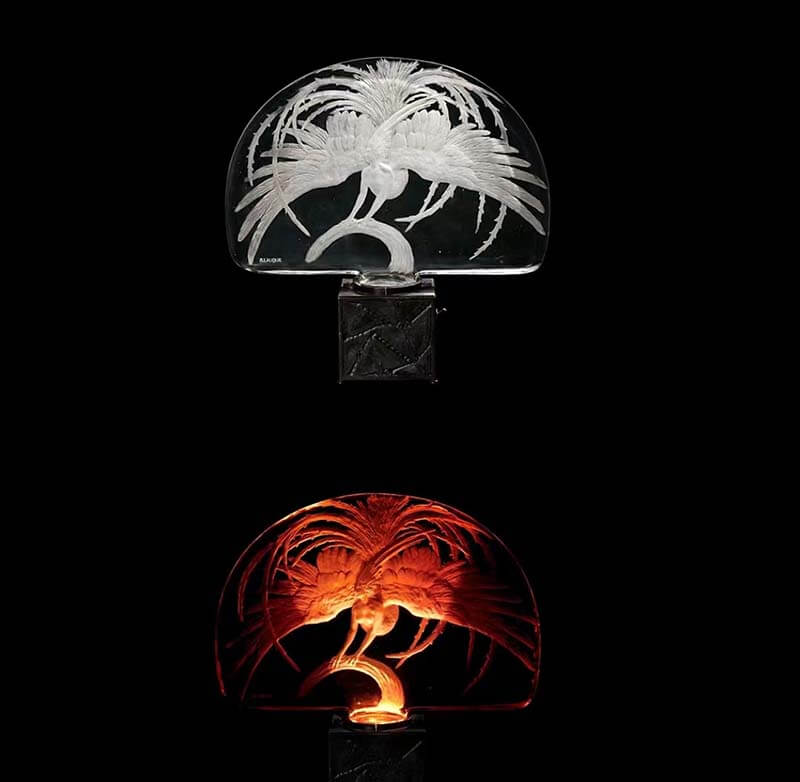

His inventive use of imitation opal glass, modeling of the person from various perspectives under shifting color refraction, holy and lovely.
Afternoon of the Shepherd by the Ballets Russes had a significant impact on the development of modernism in French art. Lalique was clearly influenced by the zeitgeist.


Beginning in 1905, he collaborated with perfume firms such as Coty, Guerlain, and Hobbigent, producing a significant number of attractive perfume bottles for them , which helped them achieve great commercial success.
Finally, consider some of Langliegh’s other glass works.


